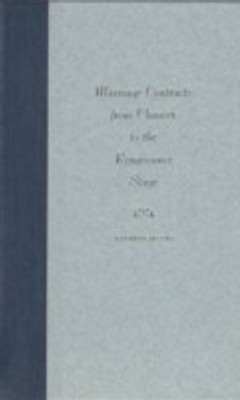Marriage Contracts from Chaucer to the Renaissance Stage(English, Hardcover, unknown)
Quick Overview
Product Price Comparison
From the 14th century to the middle of the 17th, changes in marriage law affected literary depictions of marriage in marked ways, according to Kathryn Jacobs's interdisciplinary treatment of nuptial contracts. She relates the changes in marriage law and also the enforcement policies of church courts to the changing literary treatment of marriage in Chaucer's work, in mediaeval mystery plays, and in the Renaissance plays of the late 16th and early 17th centuries. When Chaucer was writing his ""Canterbury Tales"", Jacobs argues, the marriage contract was well known to his audience. He could therefore count on them to recognize the parallels he draws between this familiar contract and the extramarital or postmarital ""contracts"" he designed. The mystery plays, meanwhile, were popular precisely because they violated the marriage contract as it was commonly known. By the Renaissance, however, church law had changed drastically, and the drama reflected public resentment and confusion about the new policies. One of the unexpected results of this was the birth of the ""lusty widow"" as a stage fantasy figure. Focusing first on Chaucer and then on drama, Jacobs offers a bridge between the late Middle Ages and the Renaissance, showing how the lives of everyday people in each age were affected by the handling of marriage law in the ecclesiastical courts.


